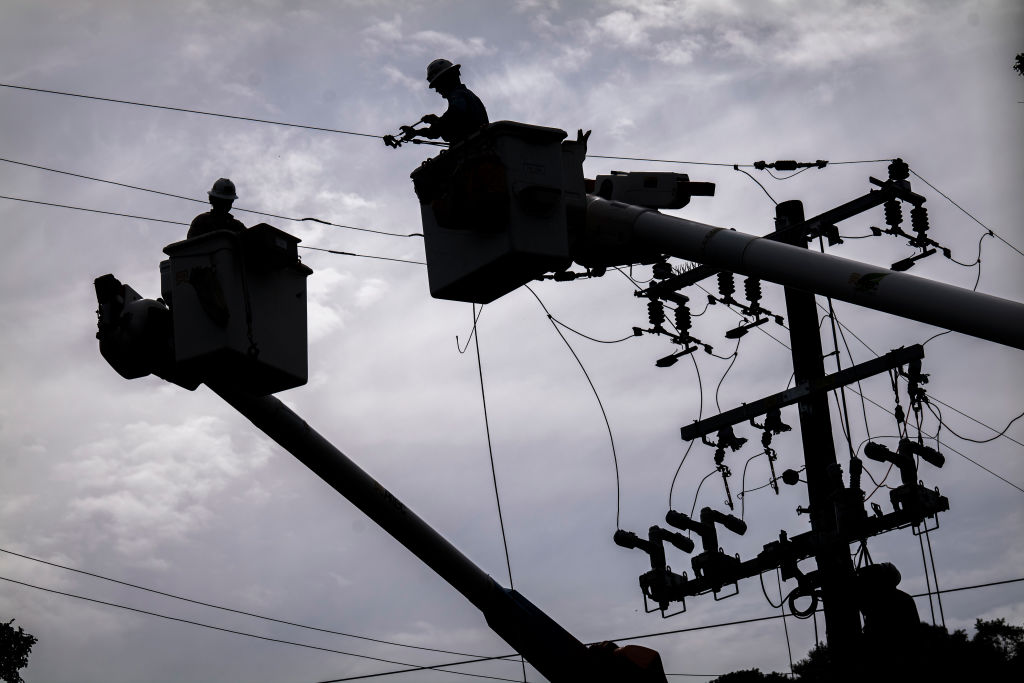
Man hospitalized, alleged suspect flees after stabbing at far North Side hotel, SAPD says
July 2, 2025
What to know before you go to Saturday’s Shakira Concert
July 2, 2025As powerful monsoon winds buffeted the Taiwan Strait, British captain Richard Boghurst braced himself for a demanding shift laying undersea power cables to carry wind energy to Taiwan’s semiconductor factories.
“The currents were so strong that during a 12-hour window, we’d only get about three to four hours to actually work,” he recalled about his recent stint on the cable-laying vessel, the Orient Adventurer, to Rest of World.
The visibility dropped so low that surveying the seabed was nearly impossible, Razvan Serbanel, a Romanian captain on the ship, told Rest of World. “Timing and planning were everything,” he said.
The Taiwan Strait is arguably the world’s most contested sea, at the heart of China’s claim to Taiwan. Its geopolitical importance stems in part from two types of marine cables that crisscross the sea floor: communication lines, about the width of a garden hose, carry data as pulses of light from internet cable landing stations elsewhere into Taiwan; and power lines transmit electricity from offshore wind farms to the island’s energy-hungry semiconductor sector.

Both types of cables are known to break, including due to sabotage by Chinese ships. In February, the internet on the remote island of Matsu abruptly went dark after a Chinese sea captain deliberately damaged a cable. This month, a Taiwanese judge sentenced him to three years of imprisonment. China has denied any involvement. Further increasing tensions, China recently announced it has developed an undersea cable cutting device.
For the global tech industry, which is heavily reliant on Taiwan’s semiconductor sector, the stakes are particularly high. Taiwanese chips underpin much of the world’s electronics and artificial intelligence models, and making them requires substantial energy. TSMC alone consumed more energy in 2024 than Iceland did the whole year. The sector’s energy needs are expected to grow eightfold by 2028, especially due to AI demands, according to government projections. At present, about 97% of its energy comes from imports, but the government has aggressively pursued offshore wind, carried onshore by thick, armoured undersea cables.
The Taiwan Strait is arguably the world’s most contested sea.
Making, installing, and maintaining these cables is vital to Taiwan’s national security, and the government has pushed for a domestic wind industry that owns its cable ecosystem.

“Taiwan can not only increase energy self-sufficiency, but also enter the green power supply chain that Apple, Microsoft, Amazon, and Facebook all value,” then-President Tsai Ing-wen had said while inaugurating a wind turbine parts factory in 2019. The sector would create over 20,000 jobs by 2025, she said.
The push has opened a rare new career path in Taiwan’s industrial job market and people with engineering skills are suddenly in demand in the niche wind-energy cables sector. Undersea cable installers sail for weeks at a time, handling massive weights: 50 kilograms (over 110 pounds) per meter, which quickly adds up to positioning 2.5 metric tons of polymer-and-metal cables in a roiling ocean. They have to unspool the cables from giant carousels by maintaining precise tension and rotation so it doesn’t tangle.
“It’s like constructing a building in a place that is constantly shaking and completely unpredictable,” Tai-Wen Hsu, a professor in National Taiwan Ocean University’s department of harbor and river engineering, told Rest of World. “Conditions are harsh and can change rapidly.”
The first Taiwan-owned submarine cable factory, operated by Walsin Energy Cable System, will launch later this year. The sector produced goods worth more than 188 billion New Taiwan dollars ($5.77 billion) last year, a 51% increase over production in the years before the pandemic.
“Electrical engineers often head into tech or semiconductor firms. But this new industry has opened doors for those with civil and mechanical engineering backgrounds to step into offshore energy work,” Hsu said.
Even entry-level jobs in offshore wind are highly paid, at double the average salary seen in other industrial sectors. More experienced engineers earn twice as much.

The nation got its first cable-laying vessel in 2022, when Taichung-based Dong Fang Offshore launched the Orient Adventurer. It can lay 5,000 tons of lines and is equipped with deep-sea remotely operated vehicles (ROVs) that can plunge to depths of 3,000 meters, far beyond the reach of human divers. The Adventurer’s crew has since laid cables for offshore wind farms and installed a domestic communications cable for Taiwan’s largest telecom company, Chunghwa Telecom.
We had shifting sand waves, which are underwater dunes that move. What we surveyed five years ago might be different now.
The first time Weichun Hung, a Taiwanese cable lay equipment trainee for Singaporean company SAL Shipping, stepped aboard a cable-laying vessel, he was 50 and had just left a long but stagnant career in Taiwan’s telecom sector. It was March 2021, and the ship, the Seaway Phoenix, was preparing to depart from Taichung Port to a wind farm off Taiwan’s western coast.

Taiwan’s wind power ambitions were just beginning to gather momentum. Massive wind turbine foundations had been hammered into the seabed, and vessels laden with heavy equipment roared day and night as the workers rushed to meet construction deadlines.
The Phoenix was unlike anything Hung had seen before. Its deck was dominated by two carousels, each more than three stories high and wound with kilometers of thick undersea cable, ready to be carefully placed onto the seabed.
Hung had no offshore experience, but the industry needed local workers, and fast.
“Around 2020, when some of the earlier wind farms in Taiwan were being built, we saw … foreign firms build [the farms], then leave, and the critical know-how never stays,” Daniel Shih, chief financial officer of Shinfox Far East Company, the offshore wind arm of Taiwan’s Shinfox Energy, told Rest of World.
Then domestic firms like Shinfox and Dong Fang started up, buying cable-laying vessels worth billions of dollars and competing with foreign players, Polin Chen, CEO of Dong Fang Offshore, told Rest of World. Taiwan’s government allegedly favors local suppliers in offshore wind tenders, according to a Word Trade Organization complaint filed this year by the European Union.
“We couldn’t enter the communication cable business from scratch — it’s a competitive, mature field. But offshore wind gave us a foothold and the infrastructure and scale to spill over into that market,” he said.
Taiwan is expected to become the second-largest offshore wind market in Asia by 2030, according to GWEC Market Intelligence. “Taiwan is going to build a dozen wind farms in the next decade. The scale demands that we own this knowledge,” Chen said.

One year after becoming a seaman, Hung shifted to the rigging team, helping hoist tons of cable and equipment using precision cranes. Later, he was promoted to the control room, where he now works as a cable lay tensioner, overseeing the heavy-duty tracks that guide cables off the carousels and release it at the right speed and pressure to the seabed.
This career path is typical as experienced marine engineers are difficult to come by in Taiwan, Shih said. Companies tend to recruit from adjacent industries, such as small-vessel operators, and upskill them to handle the complex logistics of cable-laying vessels. Shinfox also partners with universities to recruit talent, Shih said.
“We mostly hire people from Asia because there’s more potential to train them long-term. We also hope to get more young people in Taiwan involved in this industry, the business is going global, and they should be part of it,” he said.
Bass Lu, a marine operations manager in Taipei for Vestas APAC, graduated with a master’s in civil engineering in 2016, but detoured into the wind sector. “When I just graduated, many international companies were investing in Taiwan’s offshore wind industry. I figured this was a field with no ceiling,” the 32-year-old told Rest of World.
He learned on the job at Northland Power’s Hai Long project, where he saw just how complicated submarine cable-laying can be.

The process starts with planning through surveys and assessments of the seabed and the project. During construction, crews carry out tasks like piloting ships, operating ROVs, and trenching the seabed. Project engineers oversee it all, from monitoring the tides to coordinating connections between various stations.
The Taiwan Strait’s unpredictable seabed makes planning harder, Lu said.
“At Hai Long, we had shifting sand waves, which are underwater dunes that move. What we surveyed five years ago might be different now,” he said.
Yi-teng Chia, a Taiwanese cable installation engineer based in Taipei at Van Oord, said his job has given him opportunities to travel internationally and grow. He works at Taichung Port, managing cable transfers between ships and coordinating offshore deployments. He recently flew to Greece to help pick up and load out cables.
“There are so many opportunities. Taiwan is just getting started, and demand for cable engineers is only growing,” he said.
Great Job Hsiuwen Liu & the Team @ Rest of World – Source link for sharing this story.






